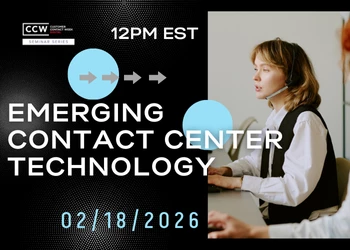Back to Core Values in Call Center Customer Service: Reconnect Call Center Customers and Employees with the Company
Add bookmark
The call center has been named the drain of the organization. Unfortunately this is a true statement. Anything that goes wrong within an organization’s attempt to sell and deliver products and services will backfire into customer service. Furthermore, call center employees are often viewed and treated as production capacity, not as one of the most important assets of the company.
Reducing the P-side of the call center equation
The starting point for the customer service call center, as we know the call center today, has been the desire to concentrate the work (handling customer calls), which was viewed as "disruptive" of the higher valued (administrative) work. The clear signs are still there today: Administrative work usually gets paid better and working conditions in "the back office" are significantly better.
Over the past decade or two the call center has been managed on the P side of the equation: P (price per call center contact) x Q (volume of call center contacts). Almost all innovations in the call center or customer service management have been aimed at reducing the human factor in the call center equation, because that’s where the costs were considered to be highest. Even Quality and Knowledge Management systems could only be implemented in call centers after proving ROI through reduction of call center employee costs (e.g. of monitoring and coaching).
Sadly, for a long time, the only "quality" parameter in play at call centers has been Average Speed of Answer or call service level agreement and until recently one was considered a call center specialist if one understood how to increase accessibility whilst increasing call center productivity.
Change the Course of Call Center Evolution
I believe that all of the above has resulted in the following "shocking" fact:
The probability that a service interaction will drive disloyalty is approximately four times greater than the chance it will create any positive loyalty impression. I see this statement as our main challenge in call center management for the upcoming decade.
It proves that we are not doing a great job. We have disconnected the customer from the company by disconnecting the customer service call center employees from the company first.
The above examples prove to me that it is part of our genetic structure. This is not an easy fix. We are in need of genetic manipulation, we need to change the course of call center evolution: We need a new course, a new map and a new compass to support that.
What Should the Call Center of Tomorrow Chase? How Do We Reconnect the Customer?
The course of call center evolution is being changed. We already see smart companies such as Amazon and Zappos following the new course. It is likely that more have followed. We just do not hear as much of them as we do from the companies that have a bad customer service reputation. And frankly, I do not encounter a lot myself in my daily work as a consultant. Smart companies follow a course that is built upon a few simple building blocks, which result in loyal customers: Customers who buy again buy more and spread positive word of mouth.
When we choose the course of loyalty there is a clear map to follow. Several researches show that there is a high correlation with customer loyalty through the customer experience (ease of use, usefulness, delight) as well as customer engagement and last but not least employee engagement. It’s these three roads, call centers should follow to get to goal.
What Does This Mean for Call Center Key Performance Indicators?
When targeting customer loyalty, the call center should adapt their compass, their KPIs, metrics or balanced score-cards, in accordance with this goal.
How successful your customer’s experience is will not be driven by continuously reducing the human factor at call centers in the interaction with the customer. It will only do so if the alternative makes the customer service experience easier and more useful for the customer. E.g.: How easy it was for the customer to find the solution to his problem, how easy it was to find the correct phone number and how easy it was for customer service to solve the problem. And also, how empowered is the customer service representative to solve even difficult cases?
These factors will increase the likelihood of the customer service contributing to the customer experience at the call center and customer loyalty in the end.
Increasing Call Center Employee Loyalty
Call center employee loyalty does not increase by business rules or scripts that limit call center representatives to deal with customer problems themselves.
It is important to increase call center employee engagement. Call center mployee engagement does not increase by focusing on 10 critical errors out of 20 potential errors when you do (distant) call monitoring. Engaged call center employees are less ill, have higher productivity and are more likely positively contributing to the customer experience. Engaged employees are also your most loyal customer. Measurement (and improvement) of employee engagement should be a key-indicator for your scorecard.
Does the Above Mean You Can Throw Out All Your Old Call Center KPIs?
Do service level agreements (SLAs) and average handle time no longer matter? From my perspective it does not. It does imply that it is significantly more important to focus your efforts and investments in areas where it does truly matter to increase customer loyalty.
By improving on the above I bet that your "old" KPIs will improve too. Most of all your company’s profits will grow through increased sales, reduced customer churn and growth of the customer base. How’s that for an ROI? The question that remains: Does this suffice for "genetic manipulation"?
First published on Call Center IQ.









